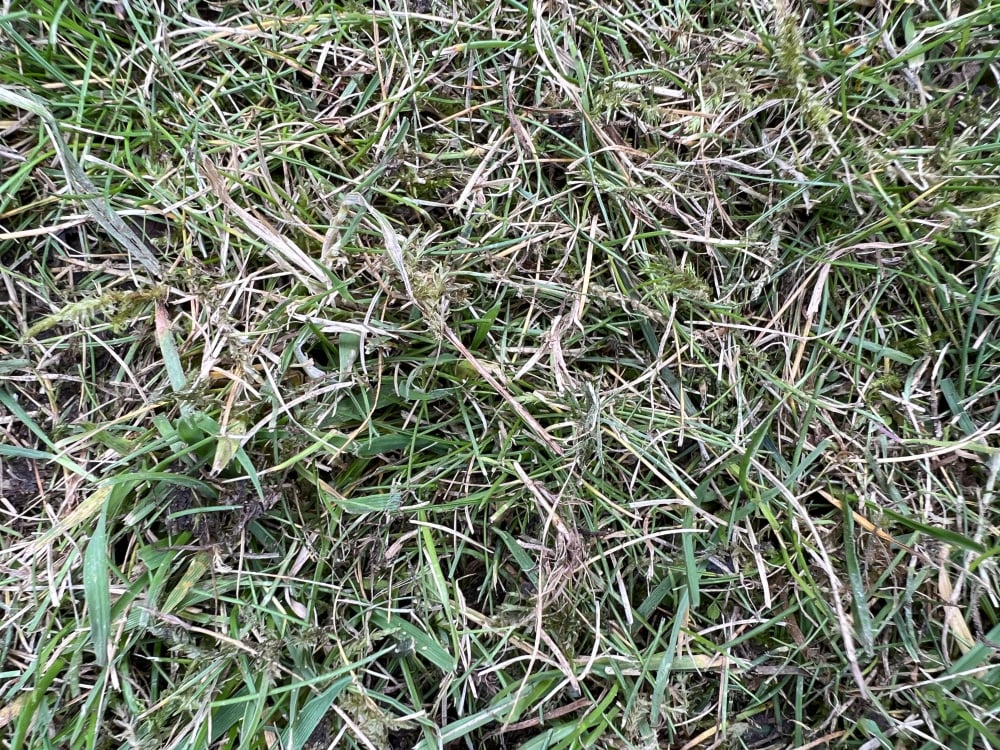This Forum will close on Wednesday 27 March, 2024. Please refer to the announcement on the Discussions page for further detail.
Lawn scarify - is it enough?
I’ve been using one of the regular weed and feed services for a while now, with scarify thrown in once, maybe twice a year (myself if my back holds up, the weed and feed team of not). My question is whether this is enough, my lawn looks “ok” but far from what I want. There seems to be constant/thick thatch in there and I have no idea how to get rid. Lawn man says scarify but doesn’t ever seem to result in what I would call a ‘clean/thatch free’ lawn. Do I need to change the approach/ change my lawn guy?
Pic below shows a close up but in fairness from a distance it doesn’t look quite as bad. Looking for a much cleaner lawn though. Any suggests most welcome

Pic below shows a close up but in fairness from a distance it doesn’t look quite as bad. Looking for a much cleaner lawn though. Any suggests most welcome

0
Posts
I then gave it a mow and there wasn't much of anything left,but it came back well lush in the spring
Billericay - Essex
Knowledge is knowing that a tomato is a fruit.
Wisdom is not putting it in a fruit salad.
What is thatch? It's half way to being compost.
My regime is:
Starting about October/November, I water lightly with a solution of 6 tablespoons of Iron Sulphate ( Ferrous sulphate, FeSO4) in a 1.5 litre watering can; about 4 cans to 100 sq metres. This does not blacken the grass but does blacken and speeds up the degradation of any thatch, so that the appearance of thatch disappears. It also kills any moss, algae anf fungus, and greens up the grass.
Iron sulphate is readily available in garden centres. But be careful, it can stain fingers (briefly) and clothes, like rust. And can discolour your paths and paving.
In about March I spread a thin layer of homemade compost. It is about 2 years old and still contains woody bits. So I mow about 3x without the box on.
If there is any moss about, I treat with FeSO4 again.
Being acid soil, I have very few worms to pull the rotted thatch into the soil. But if you have these, my regime would work even better.
PS. Sack your lawn guy.
"Have nothing in your garden that you don't know to be useful, or believe to be beautiful."
In the post "Will my lawn recover", I have not yet done any autumn Ferrous Sulphate application. I will do one soon and post the result.
"Have nothing in your garden that you don't know to be useful, or believe to be beautiful."
'At this rate you will also acidify the surface of the soil which will reduce worm-cast. It doesn’t kill worms they just move on to pastures new.'
From - https://beardsworths.co.uk/iron-sulphate/
Billericay - Essex
Knowledge is knowing that a tomato is a fruit.
Wisdom is not putting it in a fruit salad.
Just my personal opinion but paying for lawn treatment is waste of money.
Test your soil for pH.
Is it clayey or sandy?
What variety of grass are you trying to grow & what do you use your lawn for?
My lawns have enjoyed this regime for some 20-30 years with no iron build up. The soil is naturally ph 6-ish with some areas where builders have interfered nearer ph 7. It has not reduced during my watch.
Being very fast draining sand, anything soluble doesn't stay around for long. There is possibly an iron-pan forming at depth, but this has not yet impacted on my lawn growth.
I think that worms just dislike low PH rather than iron specuifically.
"Have nothing in your garden that you don't know to be useful, or believe to be beautiful."
I have seen these lawn treatment companies apply chemicals in five minutes flat then on to the next. Homeowners expect to see an improvement in their lawns but without rain [which is happening more and more each summer] the lawn is burnt and then they blame the lawn company.
With feeding the lawn ( possibly to much / poor quality fert ) it speeds up the process of grass growing not the process of microorganisms breaking down the old dead grass / organic matter . Aerating / spiking the lawn can help keep the lawn healthier keeping them microorganisms happier . Iron doesn't speed up the process .
It is believed worms dislike lawns that have had iron applied recently, it doesn't seem to work for me I tend to get them more where the lawn is more compacted .
I haven't done any autumn lawn work yet its to wet
Over fertilising increases acidity.
If your soil tends toward acid I would apply lime....in fact I'd even apply it in neutral pH soils - but not as often.
Lime can make moss growth difficult - it doesn't kill it but moss will struggle.
It also replaces calcium which can leach away in acid soil.
When I had my (very) small gardening business (until Covid restrictions put paid to it) I used to apply lime to my customers lawns - all 6 of them!
They all had neutral to slightly acidic soil.
If you want to try it - apply in Autumn in powder form without any other fertiliser - calcium bonds with nitrogen (for example) that can't be taken up by the grass. You don't need much - about a handful per m2. It'll take a couple of years to see real a difference but I noticed big improvements after that.